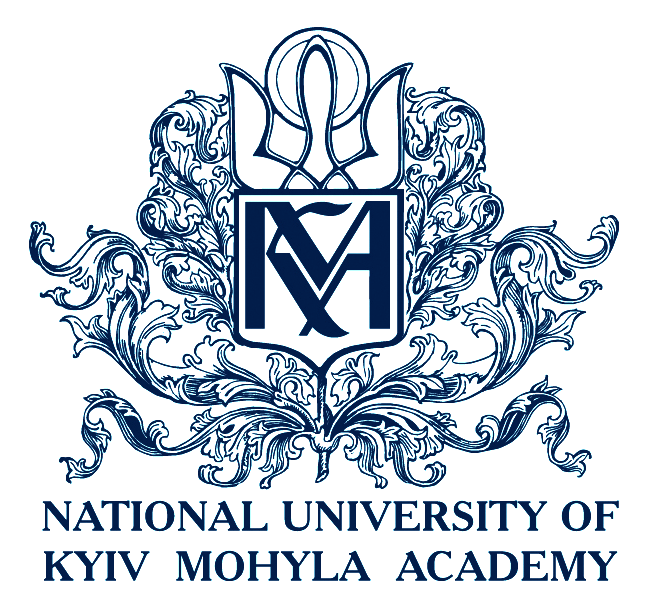Три вавилонські отроки в живописі Софійського собору в Києві
DOI:
https://doi.org/10.18523/2617-8907.2020.3.29-35Ключові слова:
Софія Київська, три вавилонські отроки, вогняна піч, монументальний живопис, фрескаАнотація
У статті проаналізовано представлення в монументальному фресковому живописі Софії Київської старозавітної історії «Три юдейські отроки в печі вогняній». Надано характеристику зображень святих юнаків, уточнення атрибуції їхніх індивідуальних образів і акцентуацію ролі сюжетів у загальній системі розпису. На прикладі неодноразового зображення трьох вавилонських отроків у монументальному живописі Софії Київської можна пересвідчитись у популярності в давньоруському релігійному мистецтві цих юних праведників та чуда, яке з ними сталося «у печі вогняній», а також у символічній важливості цієї старозавітної історії в справі християнізації Русі та в успадкуванні давніх традицій у мистецтві України.
Матеріал надійшов 15.03.2020
Посилання
- Age of Spirituality. Late Antique and Early Christian Art. Third to Seventh Century. Catalogue of the Exhibition at the Metropolitan Museum of Art (19.11.1977 – 12.02.1978). 1979. N.Y.: Metropolitan Museum of Art and Princeton University Press.
- Cabrol, Fernand, and Henri Leclercq, ed. 1920. Dictionnaire d’Archeologie chretienne et de Liturgie. Vol. 3. Paris.
- Golovan, I. A. 1973. “Novye dannye po ikonografii drevnei rospisi Sofii Kievskoi. [New data on the iconography of the ancient painting of St. Sophia of Kyiv].” In Sofiia Kievskaia: Materialy issledovanii [St. Sophia of Kyiv: Research Materials], 46–9. Kyiv: Budivelnyk [in Russian].
- Kievskii Sofiiskii sobor [St. Sophia Cathedral of Kyiv]. 1887. In Drevnosti Rossiiskogo gosudarstva [Antiquities of the Russian State], 4. St. Petersburg [in Russian].
- Koreniuk, Yurii. 1999. “Z istorii restavratsii Sofii Kyivskoii [From the history of the restoration of St. Sophia of Kyiv].” Ant : Informatsiino-dovidkovyi visnyk arkheolohii, mystetstva, kulturolohii [Ant : Information and Reference Bulletin of Archeology, Art, and Cultural Studies] 1:19–24 [in Ukrainian].
- Kornіenko, Viacheslav. 2011. Korpus graffiti Sofii Kyivskoi (XI – pochatok XVIII st.). Ch. 3: Tsentralna nava [Graffiti corps of St. Sophia of Kyiv (11th – beginning of the 18th century). Ch. 3: Central nave]. Kyiv: Horobets [in Ukrainian].
- Lopukhin, Aleksandr. 1910. Tolkovaya Bibliya ili Kommentariy na vse knigi sv. Pisaniya Vetkhogo i Novogo Zaveta [Explanatory Bible or Commentary on all books of St. Scriptures of the Old and New Testaments]. Vol. 7. Petersburg [in Russian].
- Moldovan, Aleksandr. 1984. Slovo o zakone i blagodati Ilariona [A word about the law and grace of Hilarion]. Kyiv: Naukova dumka [in Russian].
- Nikitenko, Nadezhda. 1999. Rus i Vizantiia v monumentalnom komplekse Sofii Kievskoi: Istoricheskaia problematika [Rus and Byzantium in the monumental complex of St. Sophia of Kyiv: Historical issues]. Kyiv: M. S. Hrushevsky Institute of Ukrainian Archeography and Source Study of the NAS of Ukraine [in Russian].
- Nikitenko, Nadezhda. 2008. Sviataia Sofiia Kievskaia [Saint Sophia of Kyiv], ed. by N. M. Kukovalska. Kyiv: Horobets, 2008 [in Russian].
- Nikitenko, Nadezhda, and Viacheslav Kornienko. 2014. Sobor sviatykh Sofii Kievskoi [The council of saints of St. Sophia of Kyiv]. Kyiv: M. S. Hrushevsky Institute of Ukrainian Archeography and Source Study of the NAS of Ukraine [in Russian].
- Nikitin, S. I., A. A. Tkachenko, and A. A. Lukashevich. 2009. “Vavilonskiye otroki” [“The Babylonian youths”]. In Pravoslavnaya Entsiklopediya [The Orthodox Encyclopedia] 6:481–6. Moscow: Tserkovno-nauch. tsentr “Pravoslavnaya entsikl.”. Accessed March 12, 2020. http://www.pravenc.ru/text/153809.html [in Russian].
- Osharina, Olga. 2006. “Siuzhet «Tri otroka v peshchi ognennoy» v koptskom iskusstve” [“The plot “Three youths in a fiery furnace” in the Coptic art”]. Antichnaya drevnost’ i sredniye veka [Antiquity and the Middle Ages] 37:22–31 [in Russian].
- Pogrebniak, Nikolai, archpriest. 2005. “Vetkhozavetnyye proobrazy Rozhdestva Khristova: Prorok Daniil v liturgicheskom predanii i ikonografii” [“Old Testament types of the Nativity of Christ: Prophet Daniel in liturgical tradition and iconography”]. Moskovskiie Ieparkhialnyie Vedomosti [Moscow Diocesan Sheets] 9–10 [in Russian].
- Polnoe sobranie russkikh letopisei. T. 2. Ipat’ievskaia letopis’ [The complete collection of Russian chronicles. Vol. 2. Ipat’ievskiy Chronicle]. 2001. Moscow: Yazyki russkoi kultury [in Russian].
- Ryasna, Tamara. 2018. Z istorii restavratsii stinopysu Sofii Kyivskoi [From the history of restoration of the wall paintings in St. Sophia of Kyiv]. Vinnytsya: Vinnytska oblasna drukarnia [in Ukrainian].
- Wilpert, Joseph. 1903. Die Malereien der Katakomben Roms. Freiburg-im-Breisgau: Herder.
##submission.downloads##
Як цитувати
Номер
Розділ
Ліцензія
Авторське право (c) 2020 Serhii Bozhko

Ця робота ліцензується відповідно до Creative Commons Attribution 4.0 International License.
Автори, які публікуються у цьому журналі, погоджуються з такими умовами:
а) Автори зберігають за собою авторські права на твір на умовах ліцензії CC BY 4.0 Creative Commons Attribution International License, котра дозволяє іншим особам вільно поширювати (копіювати і розповсюджувати матеріал у будь-якому вигляді чи форматі) та змінювати (міксувати, трансформувати, і брати матеріал за основу для будь-яких цілей, навіть комерційних) опублікований твір на умовах зазначення авторства.
б) Журнал дозволяє автору (авторам) зберігати авторські права без обмежень.
в) Автори мають право укладати самостійні додаткові угоди щодо поширення твору (наприклад, розміщувати роботу в електронному репозитарії), за умови збереження посилання на його першу публікацію. (Див. Політика Самоархівування)
г) Політика журналу дозволяє розміщення авторами в мережі Інтернет (наприклад, у репозитаріях) тексту статті, як до подання його до редакції, так і під час його редакційного опрацювання, оскільки це сприяє виникненню продуктивної наукової дискусії та позитивно позначається на оперативності та динаміці цитування опублікованої роботи (див. The Effect of Open Access).


